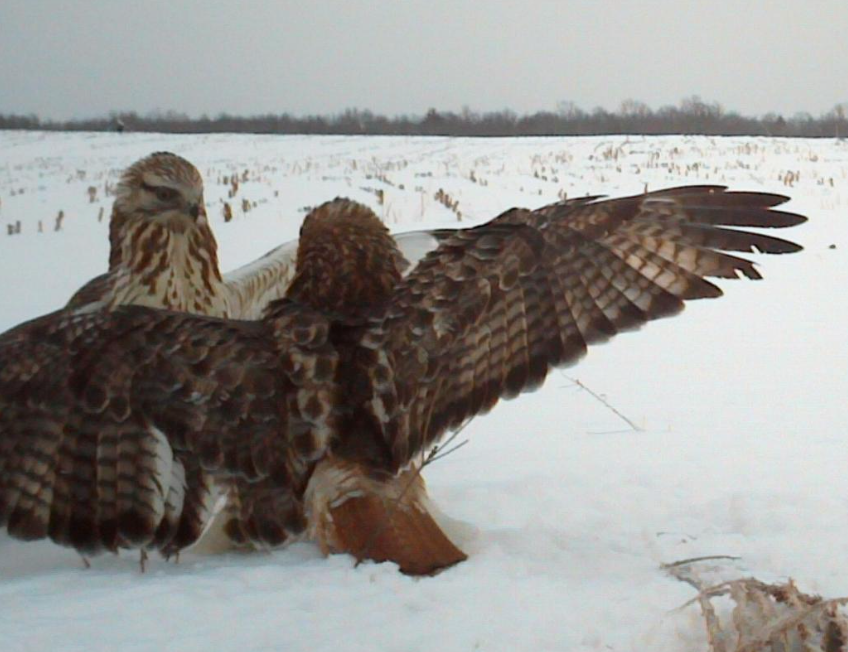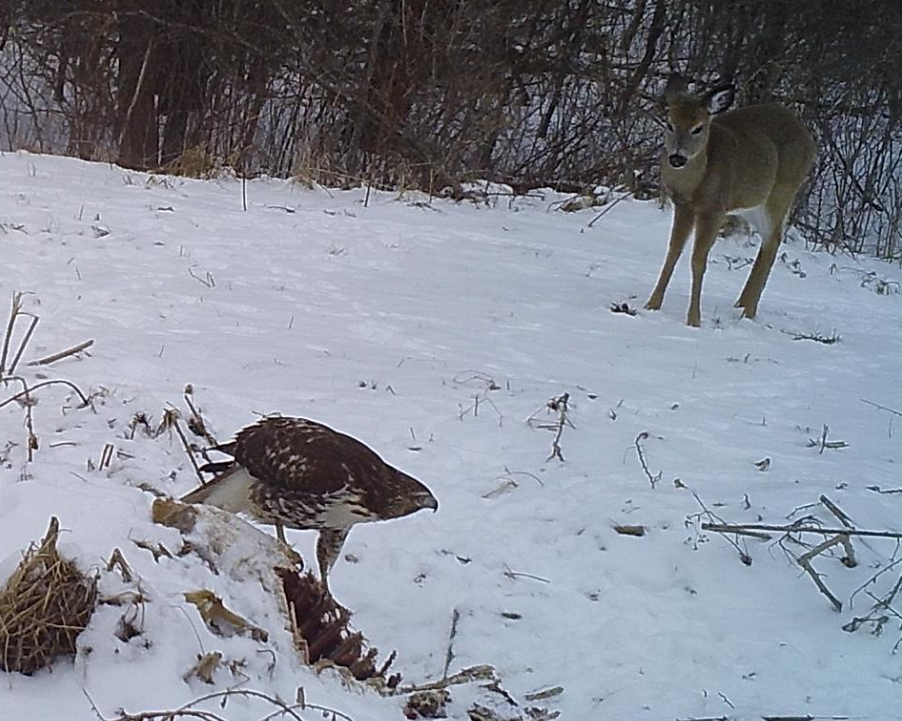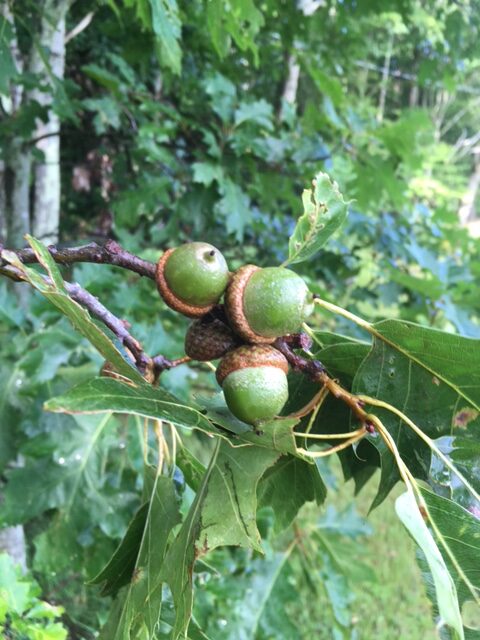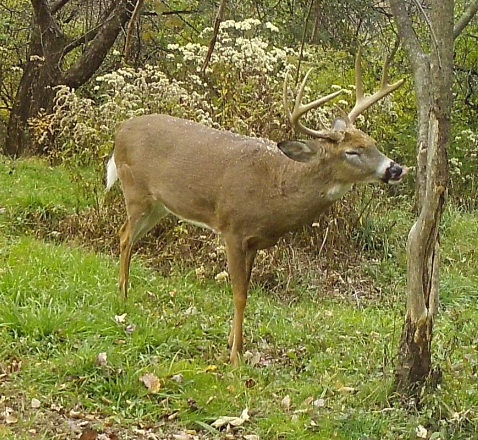“Forcasting the timing of the whitetail Rut has become one of the holy grails for deer hunters”
By Oak Duke
The other day as I walked through our gloomy mid-January woods, enjoying the mild temperatures, a large (probably female) Red-tailed Hawk’s piercing scream cut through the misty fog of the January thaw like a knife.
She flapped strongly away.
Late January is when Red-tails are glimpsed in their mating gyres, sometimes spectacular, as the male and female in their airborne passion lock talons and drop, uncontrolled towards earth.
Can’t help but wonder if any screw up and don’t spread their wings and pull up in time?
Red-tailed hawks like Bald eagles and other large raptors, even like the Great horned owl need to nest early, giving their large young a chance to learn how to hunt all the other newborn youngsters as early summer comes quickly.

For unfolding new life to have an optimal chance for survival, timing is all-important in nature, especially here in the Northern latitudes.
Whitetail fawns have the best chance to survive in the Northeast and the Midwest when born in May and June.
Too early, say born in April, the little newborns could freeze and find little sustenance as they begin hunting for new grasses and forbs early. And if they arrive late, in mid- or late-summer, these tiny fawns are often too small to survive an early, snowy, and long winter.
Deer have evolved a very complex reproductive system to maximize their chances within these relatively strict time demands imposed by climate and weather.
The further north one goes, the more rigorous and unforgiving are the time restraints. The south is more forgiving.
Some have noted the correlation between the intense the whitetail Rut in the north and the smaller window.
There are constants, even though Spring and Winter sometimes come early and other years we say they come late.

One of the facts is that the gestation period of a whitetail deer is always about the same, 200 days give or take a couple days on each side.
And by knowing this, by counting backwards from the fawn drop we can arrive at a near conception date in the fall.
Forcasting the timing of the whitetail Rut has become one of the holy grails for deer hunters.
As we have come to learn, not only through anecdotal evidence (hunting and our time in the woods) but also through science, that this mysterious time when bucks and does get together to procreate rarely, if ever happens the same two years in a row.
One year we may observe bucks and does running and chasing around such-and-such a date. And we are tempted to proclaim…ah ha, this is the date of the Rut! I have found it!
“Next year I know right where and when to be in the woods.”
And then the next year…nada.
Happens over and over again… especially in the last 10 years or so on deer hunting websites and message boards, posted by avid deer hunters.
“What Rut?”
I’ve been avidly following the whitetail Rut for over 50 years and predicting it’s timing for about the last quarter of a century in print and on the internet.
Lots of memories, sure. But also lots of notes and photos, records, and measurements.
Each year in the whitetail woods is a learning experience, as is a continual study of whitetail research and science, learning new aspects, and becoming more humble as the intricate and complex interactions of deer behavior and biochemistry become clearer and yet more labyrinthine.
Instead of timing breeding as one would think by temperatures, that is, in the fall, as the mercury drops, then for spring fawning to occur, autumnal temperature readings would correspond.
But instead, another constant that has much greater reliability than ambient temperature fluctuations is light.
As autumn approaches winter, the amount of daylight (from the sun and the moon) always lessens.
Last year, in 2023, the whitetail Rut peaked early, starting in mid-October and running into early November.
Not so this year.
This fall, like back in 2005, 1986, and 1967, there will be what is termed a bifurcated Rut, two main peaks of breeding. The first will occur in late October, with about half of the does cycling and the second go-around will hit around Thanksgiving.
How can I be so sure?
Another constant is called the Metonic Cycle, that is, the moon repeats its phases exactly the same every 19 years. And that’s the way the Rut progressed back in each of those 19-year increments.

Oak Duke/Wellsville, NY January 2024
Facebook pages:
Whitetail Page: www.facebook.com/Oak.Duke.whitetail.page
Duke’s Honey: www.facebook.com/Dukes-Honey-513590015445371/






